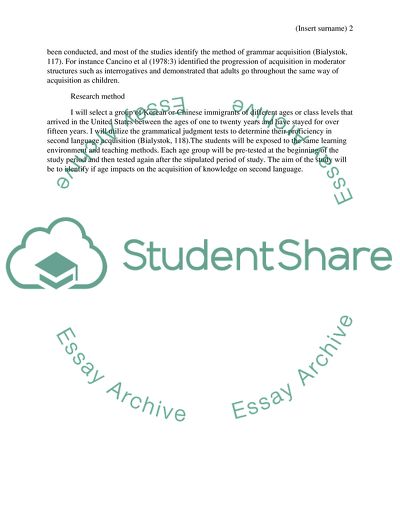Cite this document
(The Role of Age in Second Language Acquisition Annotated Bibliography Example | Topics and Well Written Essays - 3500 words, n.d.)
The Role of Age in Second Language Acquisition Annotated Bibliography Example | Topics and Well Written Essays - 3500 words. https://studentshare.org/humanitarian/1866540-the-role-of-age-in-second-language-acquisition
The Role of Age in Second Language Acquisition Annotated Bibliography Example | Topics and Well Written Essays - 3500 words. https://studentshare.org/humanitarian/1866540-the-role-of-age-in-second-language-acquisition
(The Role of Age in Second Language Acquisition Annotated Bibliography Example | Topics and Well Written Essays - 3500 Words)
The Role of Age in Second Language Acquisition Annotated Bibliography Example | Topics and Well Written Essays - 3500 Words. https://studentshare.org/humanitarian/1866540-the-role-of-age-in-second-language-acquisition.
The Role of Age in Second Language Acquisition Annotated Bibliography Example | Topics and Well Written Essays - 3500 Words. https://studentshare.org/humanitarian/1866540-the-role-of-age-in-second-language-acquisition.
“The Role of Age in Second Language Acquisition Annotated Bibliography Example | Topics and Well Written Essays - 3500 Words”. https://studentshare.org/humanitarian/1866540-the-role-of-age-in-second-language-acquisition.


